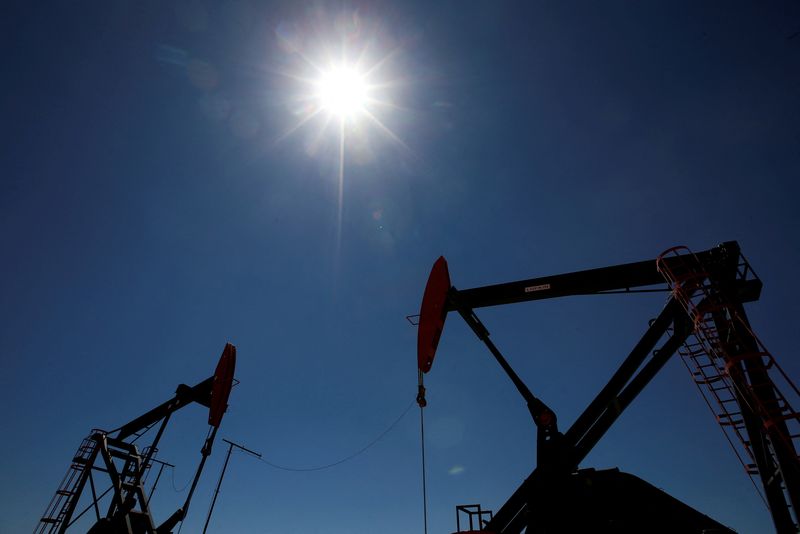Commodities
Oil prices hold steady, Russia rolls back diesel export ban


© Reuters. FILE PHOTO: Oil rigs are seen at Vaca Muerta shale oil and gas drilling, in the Patagonian province of Neuquen, Argentina January 21, 2019. REUTERS/Agustin Marcarian/File Photo
By Robert Harvey
LONDON (Reuters) -Oil prices were stable but on course for a week-on-week loss, as demand fears due to macroeconomic headwinds were compounded by another partial lifting of Russia’s fuel export ban.
On Friday, futures were down 11 cents, or 0.13%, at $83.96 at 1203 GMT, while U.S. West Texas Intermediate crude futures were down 13 cents, or 0.16%, at $82.18.
Russia announced on Friday that it had lifted its ban on diesel exports for supplies delivered to ports by pipeline, under the proviso that companies sell at least 50% of their diesel production to the domestic market.
Almost three quarters of Russia’s 35 million tonnes of diesel exports were delivered via pipeline in 2022.
The price spread between gasoil and Brent futures fell to the lowest since July at $23.59 a barrel on the news, but have since rebounded to $26.84 at 1203 GMT.
Brent and WTI futures were on course for almost 12% and 10% week-on-week declines respectively on Friday, as concerns that higher-for-longer interest rates will slow global growth and hammer fuel demand offset announcements by Saudi Arabia and Russia confirming voluntary supply cuts to the end of the year.
“Fear for the health of the global economy and thus oil demand going forward is at the heart of the sell-off,” SEB analyst Bjarne Schieldrop said.
Investors will be looking ahead to the U.S. monthly jobs report at 1230 GMT on Friday, hoping that the data show a moderation in job growth to reassure the Fed against further rate hikes.
“There will be enormous focus on jobs data for signs of cracks appearing that can offer the central bank the comfort it craves,” OANDA analyst Craig Erlam said.
The European Central Bank (ECB) has not ruled out further interest rate hikes if inflation were to keep rising, ECB board member Isabel Schnabel said in an interview.
The German economy is expected to contract by 0.4% in 2023 because of high inflation and energy prices, government sources told Reuters.
But reports of firmer Chinese travel activity could provide a floor to prices. The country’s mid-autumn and National Day holiday travel rose 71.3% on the year and 4.1% compared with 2019 to 826 million trips, according to news agency Xinhua.
Commodities
Oil prices rise; U.S. crude inventories plunge, Russia-Ukraine truce eyed
Commodities
India’s Reliance to stop buying Venezuelan oil over US tariffs, sources say
Commodities
Oil prices climb on Venezuela supply worries

 Forex3 years ago
Forex3 years agoForex Today: the dollar is gaining strength amid gloomy sentiment at the start of the Fed’s week

 Forex3 years ago
Forex3 years agoUnbiased review of Pocket Option broker

 Forex3 years ago
Forex3 years agoDollar to pound sterling exchange rate today: Pound plummeted to its lowest since 1985

 Forex3 years ago
Forex3 years agoHow is the Australian dollar doing today?

 Cryptocurrency3 years ago
Cryptocurrency3 years agoWhat happened in the crypto market – current events today

 World3 years ago
World3 years agoWhy are modern video games an art form?

 Commodities3 years ago
Commodities3 years agoCopper continues to fall in price on expectations of lower demand in China

 Economy3 years ago
Economy3 years agoCrude oil tankers double in price due to EU anti-Russian sanctions























